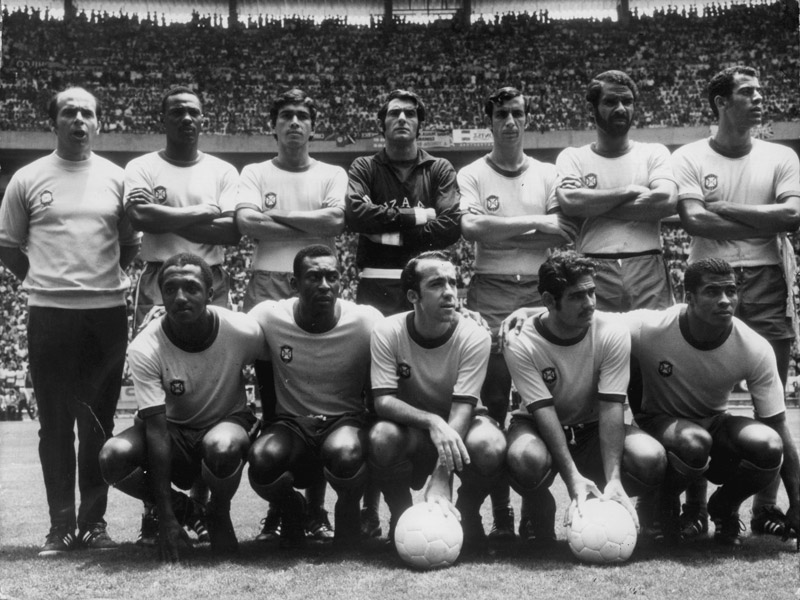Tim Vickery’s Notes From South America: Brazil Relives 1970 World Cup During Pandemic
With the world currently closed for business there is plenty of time for reflection. The outcomes of all of this thinking will be fascinating in all areas of human activity, not least in football, the most important of all unimportant things.
Brazil, for example, has the opportunity to ponder its footballing identity – defined more than anything else by the glorious triumph of the 1970 World Cup, the first one to be broadcast live on local television.
A country with a relatively young population, the majority were not alive when Pele, Jairzinho, Tostao, Gerson, Rivelino and company were astonishing the planet with 19 goals and six consecutive wins until captain Carlos Alberto held aloft the trophy.
The 50th anniversary of Mexico 70 would have been celebrated in normal circumstances. The coronavirus pandemic has brought forward the process and ensured it of a wider audience. Over the last six nights, all six of Brazil’s games in the campaign were shown on TV – the first chance that many have had to watch the matches in their entirety.
And the coverage has featured chats with some of the players.
Those who have watched the games and paid attention to the debate should be well placed to kill off one of the enduring myths of Brazilian football – that it is a collection of moments of individual genius, produced by players freshly plucked from the beach who have no interest in defence and no consideration for collective rules.
The founding father of this view was Nelson Rodrigues, a leading playwright with a fascination with football and a gift for a memorable turn of phrase.
From the mid-50s, when world titles still seemed a long way off, he was trumpeting that Brazil would conquer the planet, and he was borne out by the triumphs of 1958 and 62. He was among the first to spot the potential of Pele, he championed the midfield general Didi – sometimes seen as a luxury player until that 58 success – dubbing him ‘the Ethiopian Prince.’
On the eve of Sweden 1958 he penned a memorable passage. “The pure truth is this; any Brazilian player, when he sheds his inhibitions and puts himself in a state of grace, is unique, in terms of fantasy, improvisation and invention. To sum up – we have an excess of gifts.”
For Rodrigues, this was the key to everything – defeats were the product of a lack of self belief, triumphs the inevitable consequence of the Brazilian player entering this state of grace. Quite why this was beyond those born elsewhere was never explained. There were enough moments of individual genius to give the idea an attraction which was considerably enhanced by the skill of his writing. The prophet of victory set the tone for the global perception of the Brazilian game.
But however well written, the viewpoint of Rodrigues was fundamentally lazy, inaccurate and dangerous. Completely overlooked in his perspective was the hard work that went on in order to give the stars a platform on which to shine.
As early as 1958, Brazil were leading the field in terms of physical preparation and tactical development- and these traits were just as important in 1970, as should now be clear to those who have been watching the games.
Superbly prepared for the heat of Guadalajara and the altitude of Mexico City, Brazil won most of their matches in the second half. Of the 19 goals they scored, 12 came after the interval.
And coach Mario Zagallo had only been in charge for three months – but used them to alter the balance of the side. He had been a key part of the team in 1958 and 62, where Brazil pioneered the back four. They introduced 4-2-4. Withdrawing an extra player to the heart of the defence could have left the midfield pair overloaded, but Zagallo shuttled back from the left wing to help out. In March of 1970 he inherited a side that had been playing 4-2-4, and immediately set about changing it.
The game had moved on.
He ended up, as he is happy to agree, with a forerunner of modern day 4-2-3-1. When the team lost possession, centre forward Tostao was usually the only player left ahead of the line of the ball. The rest funneled back in a compact unit.
[collection name=”small” accordion=”mobile” excerpt=8]
The advantage of this was clear in the attractive quarter final against Peru, which Brazil enjoyed once more on Friday night. Peru were coached by Zagallo’s old team-mate Didi, and their bold and talented team lined up in a faithful copy of Brazil’s old 4-2-4.
The match was splendidly open. Brazil were clearly better, but Peru were in the game, especially after future Barcelona star Hugo Sotil was introduced and began to combine with Teofilo Cubillas.
The pair had just brought Peru back to 2-3, and Sotil was charging forward with intent once more. But he had been tracked back, deep in his own half, by Pele. That extra man in midfield made all the difference, especially if it was Brazil’s incomparable number 10. He snapped in with the tackle, Rivelino chipped over the Peru defence and Jairzinho, in fabulous form throughout the tournament, raced away to make sure of a place in the semi final – another step towards the title for a team which had done the physical and tactical work to get the best out of its stars.
Talent on its own is seldom enough – as Brazil may learn in the unlikely event of TV showing the elimination of the much hyped 2006 side by France.
Don’t forget to follow World Soccer on Facebook, Twitter and Instagram.







